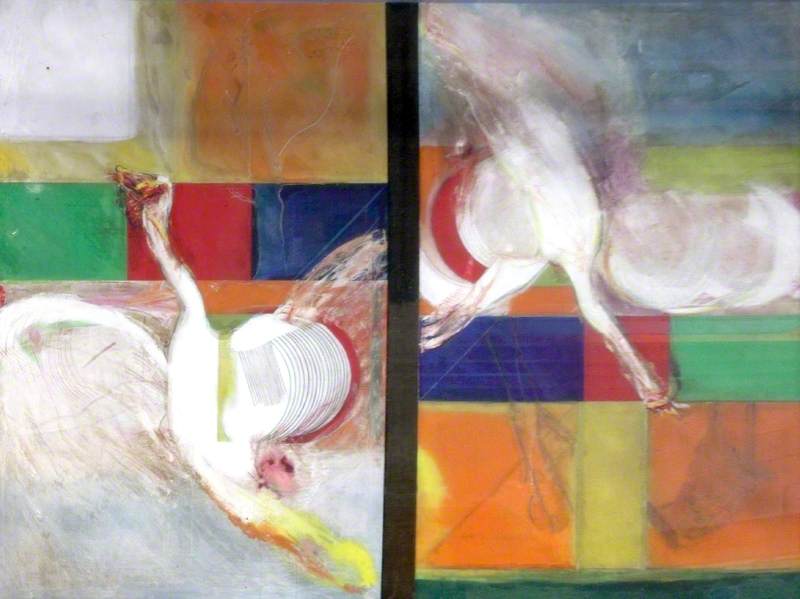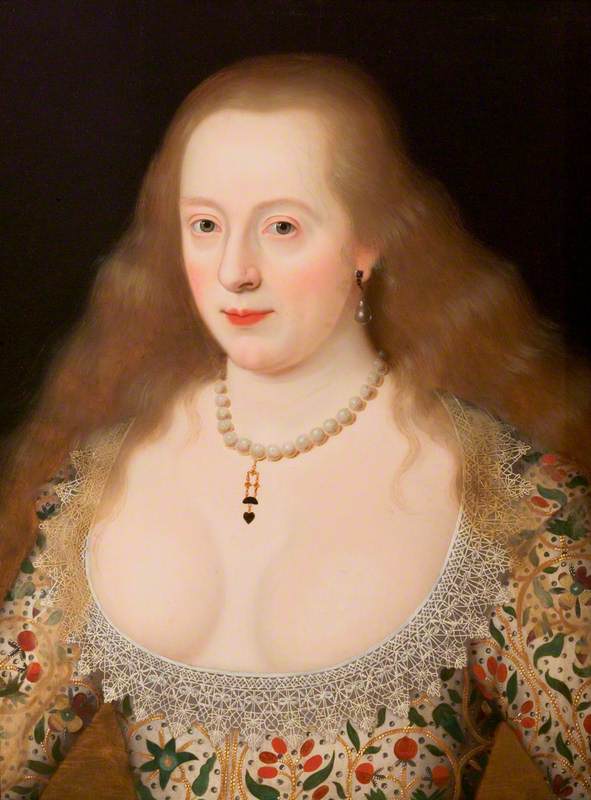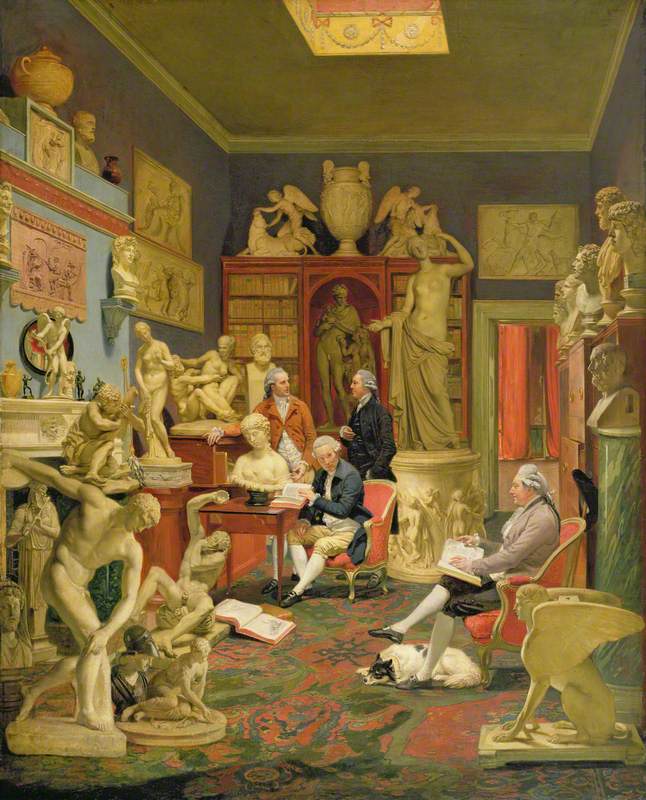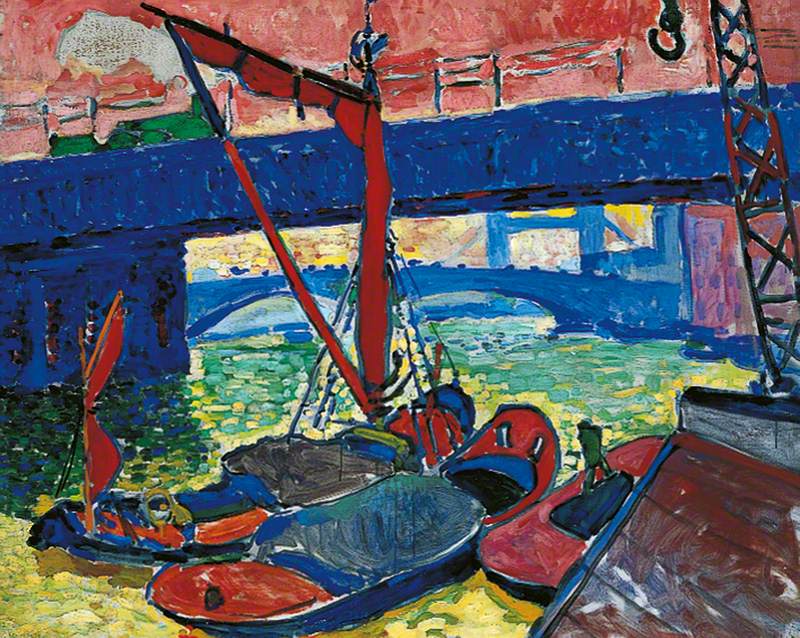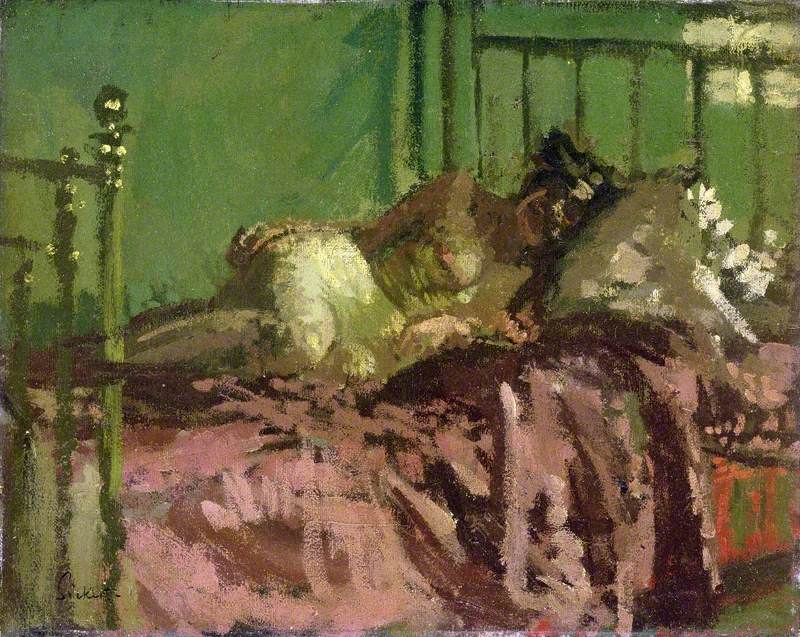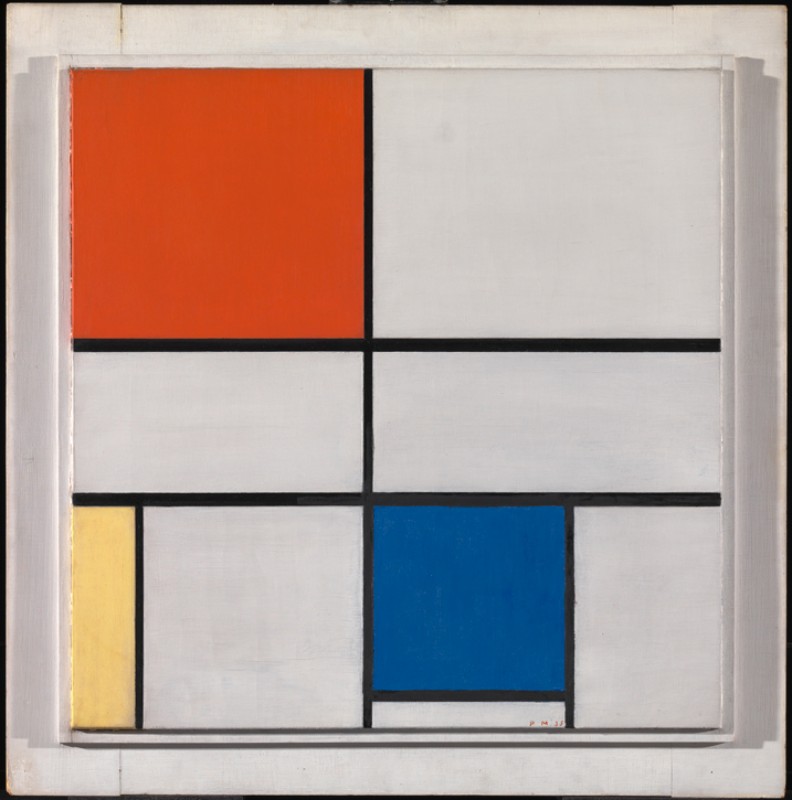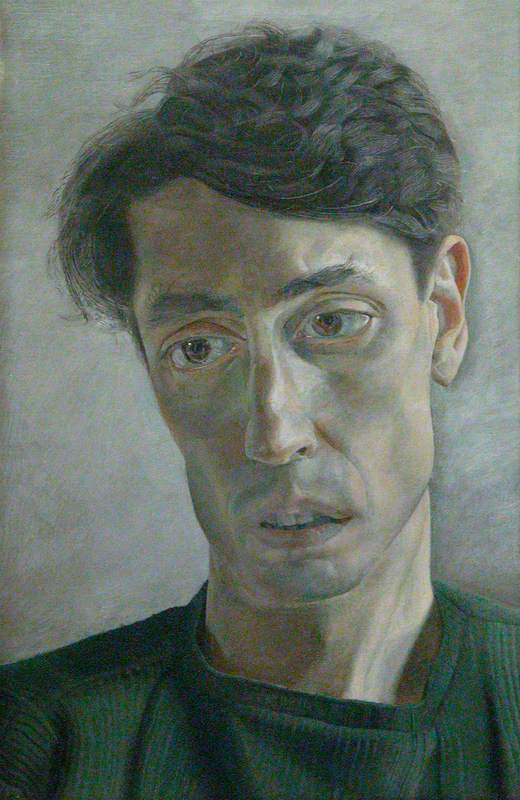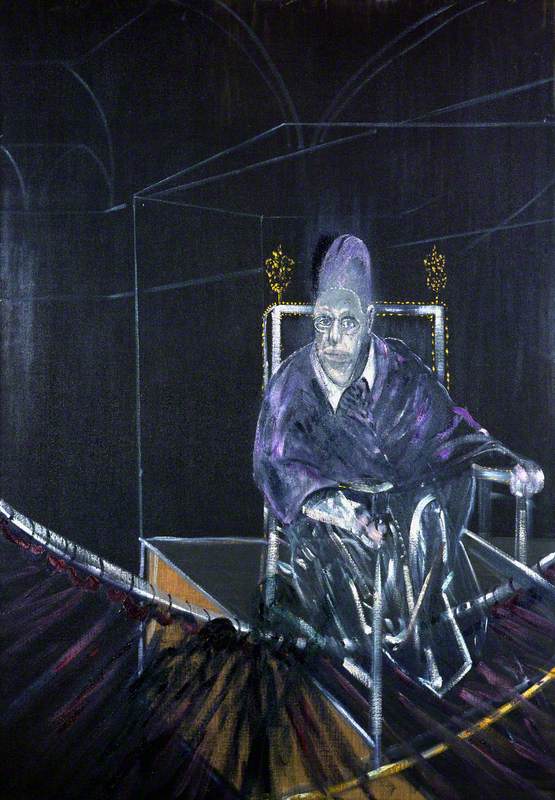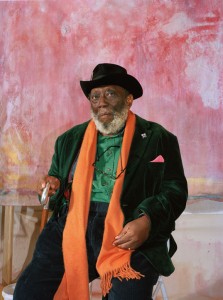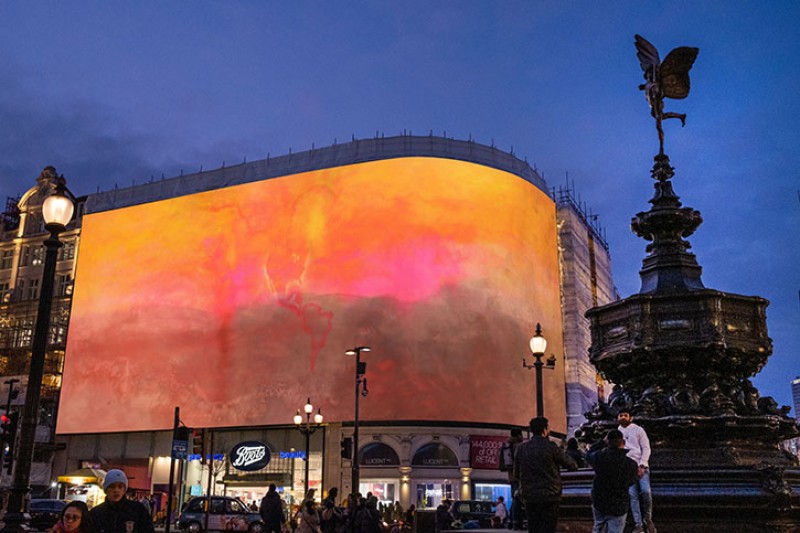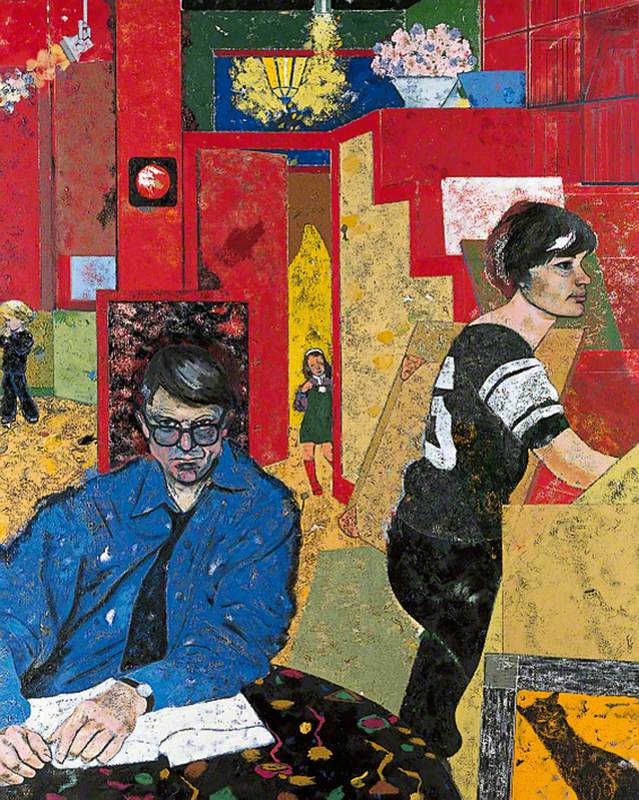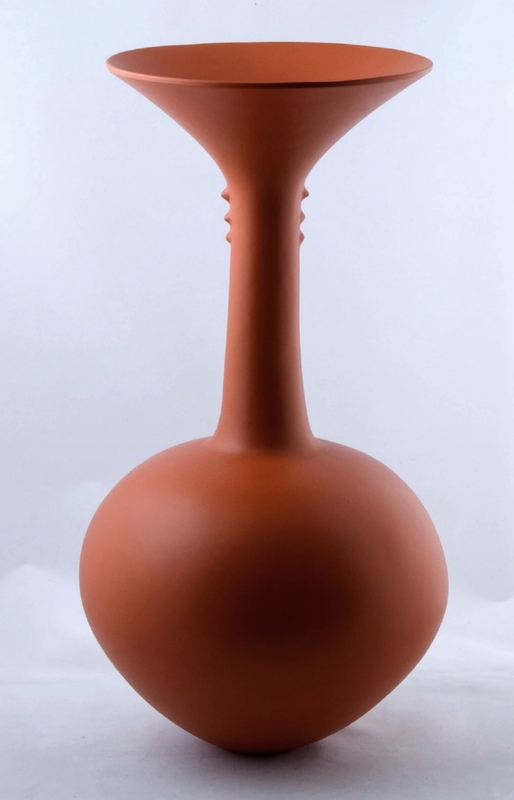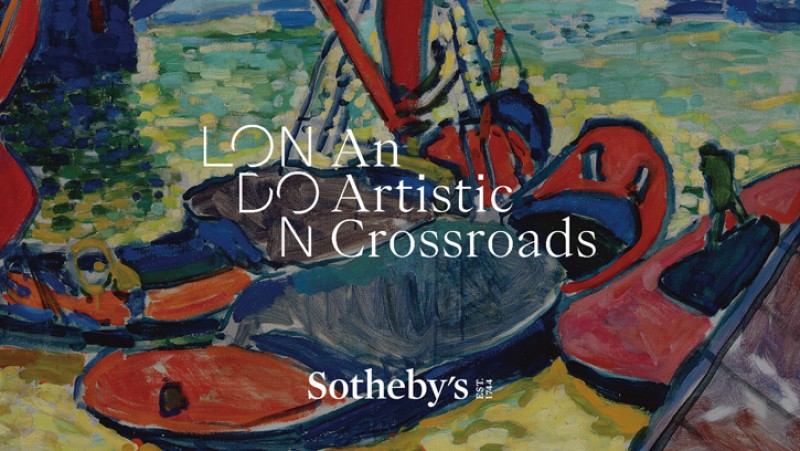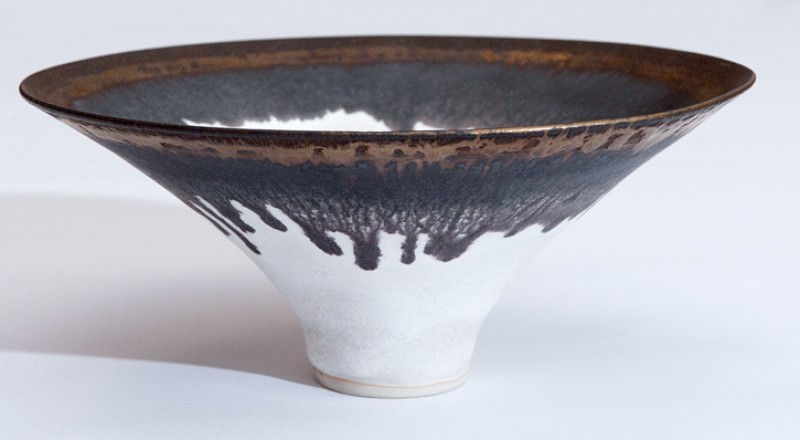Twelve UK museums come together with Art UK and Sotheby's to stage a month-long exhibition celebrating the UK's central role in the creative lives of leading international artists.
The free exhibition 'London: An Artistic Crossroads' is on display at Sotheby's New Bond Street Galleries from 25th May to 5th July 2024.
Richard Sheridan Patrick Michael Aloysius Franklin Bowling – or Frank Bowling, as he prefers to be known – was born in 1934 in Guyana. His father was a police paymaster, his mother a seamstress. In 1953 he flew to England to further his education, and after two years of national service in the RAF decided to train as a painter in London.
After spells at the Regent Street Polytechnic and Chelsea School of Art, he won a scholarship to the Royal College of Art in 1959, where he befriended many other students of his generation, including David Hockney and R. B. Kitaj. During these formative years, his tastes were eclectic. He greatly admired the work of Francis Bacon, but he also loved the painting of Mondrian, about whom he wrote his final-year thesis at the RCA; and became fascinated by the 'allover' drip painting techniques of Jackson Pollock on a visit to New York in 1961.
Big Bird, of 1964, is one of the most impressive paintings to survive from the early part of his career.
The influence of Bacon can be felt in its diptych structure, impulsive handling and blurred forms, while the flat planes of colour laid out in grid formation pay homage to the memory of Mondrian.
The principal motif, of a swan with a bloodied beak wheeling though space, was based on an actual dying swan, its feathers gummed together with oil, that he had seen one day while walking the shore of the Thames. It was an image intended by the artist to express his own sense of unease both with himself and his predicament: apparently serene and successful, but struggling to make work he felt would truly reflect his capabilities, and struggling to gain recognition in a society where prejudice was rife and many found it difficult to see beyond the colour of his skin.
In 1965 Big Bird was submitted to the 'First World Festival of Negro Arts' in Dakar, Senegal, where it won the grand prize for painting. Bowling was dispirited by the accolade, commenting that he would prefer to be known as a painter, not a Black painter, and comparing his heritage in Guyana to the heavy stone rolled ceaselessly uphill by the Greek mythological character Sisyphus.
54 years later, in 2019, having developed his work in multiple different directions, Bowling was granted a retrospective at Tate Britain. Fittingly, Big Bird was given a prominent place in the very first gallery of the exhibition.
Andrew Graham-Dixon, art historian and broadcaster
The free exhibition 'London: An Artistic Crossroads' is on display at Sotheby's New Bond Street Galleries from 25th May to 5th July 2024
You can download the free exhibition tour within Art UK's guide on Bloomberg Connects
